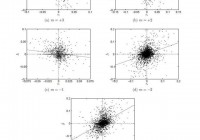UBS Rolls Out Leveraged US Small Cap Dividend ETN
Concerns related to dividend ETFs are evident, given higher chances of the Fed hiking interest rates sooner than expected in the U.S. Yet, income ETFs draw enough attention thanks to persistent global turmoil (read: 3 ETFs Yielding Over 6% to Watch as Market Speculates Rising Rates ). There are plenty of options in this space too, as a number of providers launched new dividend ETFs over the past few months. While the space is definitely jam-packed, UBS – a leader in exchange-traded notes – discovered room for yet another play in the leveraged dividend ETF space. Consequently, the company rolled out a new income fund namely ETRACS Monthly Pay 2xleveraged US Small Cap High Dividend ETN (NYSEARCA: SMHD ) targeting the U.S. small-cap space. Inside SMHD This ETN looks to follow two times the monthly performance of the Solactive US Small Cap High Dividend Index. This benchmark consists of 100 high dividend yielding small cap U.S. firms. Top holdings for the ETN’s underlying index include LinnCo LLC (NASDAQ: LNCO ) (5.98%), Denbury Resources (NYSE: DNR ) (5.75%) and Peabody Energy (NYSE: BTU ) (5.22%), all of which account for over 15% of the note. In terms of yield, the index pays about 17% per annum (as of February 3, 2015) to investors, a pretty solid level. And for such a smart exposure, the cost does not seem steep as the product charges 85 bps in fees, which is lower than the average expense ratio charged by the leveraged equity ETFs. As far as country exposure is concerned, the product puts about 93.6% of assets in the U.S. followed by Bermuda (5.3%) and United Kingdom (1.1%). Investors should note that the product carries the credit risk of UBS AG (NYSE: UBS ) attached to it, though the issuer is considered a high-rated and sought after financial institution. How Does it Fit in a Portfolio? This ETF is an intriguing choice for investors seeking a new take on income investing. It could also be appropriate for investors seeking to ride out the U.S. growth momentum amid global meltdown and earn substantial yield as the domestic economy seems set to hike the key interest rates this year. Notably, given the currency concerns and global turmoil, small-caps appear better bets than large caps when it comes to investing in the domestic arena. After all, these pint-sized equities revolve around the domestic economy more than the large caps, which normally have a wider foothold abroad (read: Investor Guide to Small-Cap Value ETFs ). On the other hand, the ETN does not look to be a pricier option giving investors another reason to bend towards it. Plus, a monthly rebalancing strategy is a winning criterion in the leveraged space as many other products rebalance on a daily basis, enhancing the risk quotient in the product (read: UBS Launches New Monthly Resetting Leveraged ETF ). Meet the Competitors The leveraged high yield space is still not chockablock. Among the trendy and coveted ones, UBS itself operates two products namely UBS ETRACS Monthly Pay 2x leveraged Dow Jones Select Dividend Index ETN (NYSEARCA: DVYL ) and UBS ETRACS Monthly Pay 2x leveraged S&P Dividend ETN (NYSEARCA: SDYL ) . While SDYL targets a monthly 2x version of the 50 highest dividend yielding firms in the S&P Composite 1500 Index and DVYL focuses on the Dow Jones U.S. Select Dividend Index which screens by the dividend per share growth rate, dividend payout percentages, and average dollar trading volume, and then selects on the basis of dividend yield. SDYL has an asset base of $21.9 million and charges 30 bps in fees while DVYL has so far amassed about $33 million in assets and charges about 35 bps in fees. SDYL yields 4.45% in dividends annually (as of February 13, 2015) and DVYL yields 6.50%. Considering these options, the small-cap concept is fresh in the leveraged equities ETF space and should not face much problem in hoarding investors’ money. Though the product is priced higher than the issuers’ older offerings, a novel theme and a substantially higher yield opportunity should more than compensate for increased costs.
